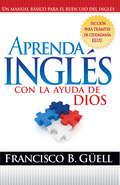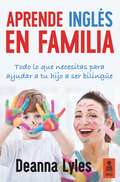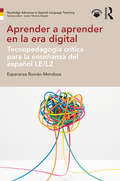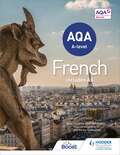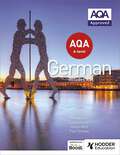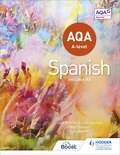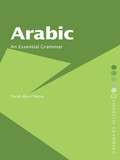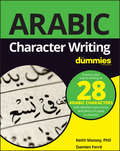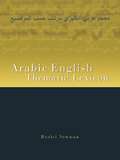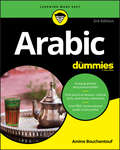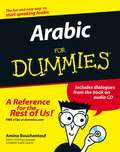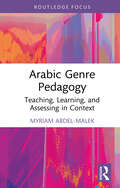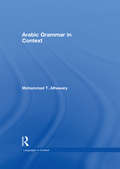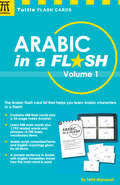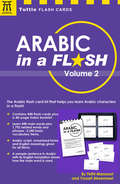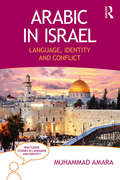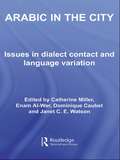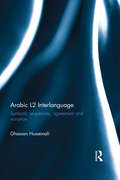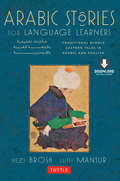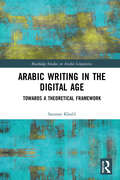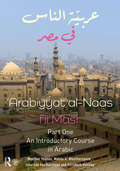- Table View
- List View
Aprenda Inglés Con La Ayuda De Dios: Un manual básico para el buen uso del inglés
by Francisco GuellEl inglés es un idioma difícil de aprender para muchos. Por eso, este libro está diseñado como un manual sencillo y fácil de usar. Toda persona que esté decidida a aprender inglés para desempeñarse mejor en sus estudios, su profesión, los negocios o, simplemente, en su diario vivir, ahora lo podrá lograr ¡con la ayuda de Dios! El autor, Francisco B. Güell, le enseña principios básicos de gramática inglesa y, basándose en su propia experiencia, expone ejemplos sencillos y prácticos para la vida cotidiana. A diferencia de otros libros, éste le provee herramientas claves como:- Pronunciar correctamente el inglés leyéndolo en español- Entender los verbos fundamentales y su uso correcto- Saber las vocales y las consonantes inglesas- Aumentar el vocabulario con ejercicios prácticos- Aprender frases usadas en supermercados, visitas médicas o restaurantes- Conocer sobre la ciudadanía estadounidense y sus trámites- ¡ Y mucho más con la ayuda de Dios!
Aprende inglés en familia: Todo lo que necesitas para ayudar a tu hijo a ser bilingüe
by Deanna Lyles¿Has pensado cuánto te gustaría poder hablar inglés con soltura? ¿Y ayudar a que tus hijos lo aprendan de pequeños como tú no pudiste hacerlo? Aprende inglés en familia tiene todo lo que necesitas para conseguir ambos objetivos de forma fácil y divertida. Que dos padres no nativos críen un hijo bilingüe es mucho más fácil de lo que parece, y este libro te proporcionará todo lo que necesitas para llevarlo a cabo. Tras un repaso básico sobre el bilingüismo y cómo se aplica a los niños, aquí encontrarás cientos de palabras y expresiones de la vida diaria, además de un sinfín de trucos y consejos que te enseñarán cómo lograr que tus hijos sean bilingües gracias a las canciones, los juegos, los cuentos, el vocabulario y las expresiones que forman parte de la cultura infantil anglosajona desde hace generaciones. También descubrirás cómo desarrollar un plan de bilingüismo específicamente diseñado para tu familia, para que podáis dar pasos firmes hacia vuestro objetivo. ¿Por qué no empezar a mejorar el inglés de toda la familia hoy mismo?
Aprender a aprender en la era digital: Tecnopedagogía crítica para la enseñanza del español LE/L2
by Esperanza Román-MendozaAprender a aprender en la era digital provides a comprehensive, state-of-the-art account that empowers readers to leverage learning technologies to promote second language learner autonomy. Written entirely in Spanish, the book covers a breadth of innovative topics in the teaching of Spanish via and with technology, such as emerging pedagogies, autonomous and participatory learning, learner agency and identity, teacher development, and post-communicative curriculum design. Key features: a novel and unique approach, combining the latest research on learning autonomy and instructional technologies in language learning; an emphasis on the connections between theory and practice, with concrete suggestions for using technology in the classroom; an extensive selection of curricular and pedagogical tools that can be easily adapted to various teaching and learning environments and needs; a broad selection of bibliographical references for further reading and research; a bilingual glossary of key techno-pedagogical terms; a catalogue with over 250 tools for second language learning and teaching, with contextualized examples of their practical application; a comprehensive eResource with a wealth of additional materials, including access to a database of technological tools and best practices in teaching Spanish with technology. Written in a clear and accessible manner, Aprender a aprender en la era digital is ideal for instructors of Spanish at all educational levels. The book will also be of great interest to teachers of languages other than Spanish, as well as graduate students pursuing a degree in Spanish, Educational Technology or Language Education.
AQA A-level French (includes AS)
by Hodder EducationExam Board: AQALevel: AS/A-levelSubject: FrenchFirst Teaching: September 2016First Exam: June 2017Our Student Book has been approved by AQA. Support the transition from GCSE and through the new A-level specification with a single textbook that has clear progression through four defined stages of learning suitable for a range of abilities.We have developed a completely new textbook designed specifically to meet the demands of the new 2016 specification. The Student Book covers both AS and A-level in one textbook to help students build on and develop their language skills as they progress throughout the course. - Supports the transition from GCSE with clear progression through four stages of learning: transition, AS, A-level and extension- Exposes students to authentic target language material with topical stimulus, and film and literature tasters for every work- Builds grammar and translation skills with topic-related practice and a comprehensive grammar reference section- Develops language skills with a variety of tasks, practice questions and research activities- Gives students the tools they need to succeed with learning strategies throughout - Prepares students for the assessment with advice on essay-writing and the new individual research projectAudio resources to accompany the Student Book must be purchased separately. They can be purchased in several ways: 1) as part of the Boost digital teacher resources; 2) as a separate audio download; 3) as part of the Boost eBook. The audio resources are not part of the AQA approval process.
AQA A-level French (includes AS)
by Jean-Claude Gilles Rod Hares Casimir D'AngeloOur Student Book has been been approved by AQA. Support the transition from GCSE and through the new A-level specification with a single textbook that has clear progression through four defined stages of learning suitable for a range of abilities.We have developed a completely new textbook designed specifically to meet the demands of the new 2016 specification. The Student Book covers both AS and A-level in one textbook to help students build on and develop their language skills as they progress throughout the course. - Supports the transition from GCSE with clear progression through four stages of learning: transition, AS, A-level and extension- Exposes students to authentic target language material with topical stimulus, and film and literature tasters for every work- Builds grammar and translation skills with topic-related practice and a comprehensive grammar reference section- Develops language skills with a variety of tasks, practice questions and research activities- Gives students the tools they need to succeed with learning strategies throughout - Prepares students for the assessment with advice on essay-writing and the new individual research projectAudio resources to accompany the Student Book can be purchased in several ways: 1) as part of the Dynamic Learning Teaching and Learning resource, 2) downloaded separately, 3) as part of the Student eTextbook. The Audio resources are not part of the AQA approval process.
AQA A-level German (includes AS)
by Amy Bates Louise Fenner Helen Kent Paul Stocker Casimir d'Angelo Rod Hares Jean-Claude Gilles Lauren Léchelle Kirsty Thathapudi Lisa Littlewood Séverine Chevrier-Clarke Hodder EducationExam Board: AQALevel: AS/A-levelSubject: GermanFirst Teaching: September 2016First Exam: June 2017Our Student Book has been approved by AQA.Support the transition from GCSE and through the new A-level specification with a single textbook that has clear progression through four defined stages of learning suitable for a range of abilities.We have developed a completely new textbook designed specifically to meet the demands of the new 2016 specification. The Student Book covers both AS and A-level in one textbook to help students build on and develop their language skills as they progress throughout the course. - Exposes students to authentic target language material with topical stimulus, and film and literature tasters for every work- Supports the transition from GCSE with clear progression through four stages of learning: transition, AS, A-level and extension- Builds grammar and translation skills with topic-related practice and a comprehensive grammar reference section- Develops language skills with a variety of tasks, practice questions and research activities- Gives students the tools they need to succeed with learning strategies throughout - Prepares students for the assessment with advice on essay-writing and the new individual research projectAudio resources to accompany the Student Book must be purchased separately. They can be purchased in several ways: 1) as part of the Boost digital teacher resources; 2) as a separate audio download; 3) as part of the Boost eBook.The audio resources are not part of the AQA approval process.
AQA A-Level German (includes AS)
by Amy Bates Helen Kent Paul StockerOur Student Book has been approved by AQA.Support the transition from GCSE and through the new A-level specification with a single textbook that has clear progression through four defined stages of learning suitable for a range of abilities.We have developed a completely new textbook designed specifically to meet the demands of the new 2016 specification. The Student Book covers both AS and A-level in one textbook to help students build on and develop their language skills as they progress throughout the course. - Exposes students to authentic target language material with topical stimulus, and film and literature tasters for every work- Supports the transition from GCSE with clear progression through four stages of learning: transition, AS, A-level and extension- Builds grammar and translation skills with topic-related practice and a comprehensive grammar reference section- Develops language skills with a variety of tasks, practice questions and research activities- Gives students the tools they need to succeed with learning strategies throughout - Prepares students for the assessment with advice on essay-writing and the new individual research projectAudio resources to accompany the Student Book can be purchased in several ways: 1) as part of the Dynamic Learning Teaching and Learning resource, 2) downloaded separately, 3) as part of the Student eTextbook. The audio resources are not part of the AQA approval process.
AQA A-level Spanish (includes AS): Spanish Vocabulary For Aqa A-level
by Mike Thacker Tony Weston José Antonio Sánchez Hodder EducationExam Board: AQALevel: AS/A-levelSubject: SpanishFirst Teaching: September 2017First Exam: June 2018Our Student Book has been approved by AQA.Support the transition from GCSE and through the new A-level specification with a single textbook that has clear progression through four defined stages of learning suitable for a range of abilities.We have developed a completely new textbook designed specifically to meet the demands of the new 2016 specification. The Student Book covers both AS and A-level in one textbook to help students build on and develop their language skills as they progress throughout the course. - Exposes students to authentic target language material with topical stimulus, and film and literature tasters for every work- Supports the transition from GCSE with clear progression through four stages of learning: transition, AS, A-level and extension- Builds grammar and translation skills with topic-related practice and a comprehensive grammar reference section- Develops language skills with a variety of tasks, practice questions and research activities- Gives students the tools they need to succeed with learning strategies throughout - Prepares students for the assessment with advice on essay-writing and the new individual research projectAudio resources to accompany the Student Book must be purchased separately. They can be purchased in several ways: 1) as part of the Boost digital teacher resources; 2) as a separate audio download; 3) as part of the Boost eBook.The audio resources are not part of the AQA approval process.
AQA A-level Spanish (includes AS)
by Mike Thacker Tony Weston José García SánchezOur Student Book has been approved by AQA.Support the transition from GCSE and through the new A-level specification with a single textbook that has clear progression through four defined stages of learning suitable for a range of abilities.We have developed a completely new textbook designed specifically to meet the demands of the new 2016 specification. The Student Book covers both AS and A-level in one textbook to help students build on and develop their language skills as they progress throughout the course. - Exposes students to authentic target language material with topical stimulus, and film and literature tasters for every work- Supports the transition from GCSE with clear progression through four stages of learning: transition, AS, A-level and extension- Builds grammar and translation skills with topic-related practice and a comprehensive grammar reference section- Develops language skills with a variety of tasks, practice questions and research activities- Gives students the tools they need to succeed with learning strategies throughout - Prepares students for the assessment with advice on essay-writing and the new individual research projectAudio resources to accompany the Student Book can be purchased in several ways: 1) as part of the Dynamic Learning Teaching and Learning resource, 2) downloaded separately, 3) as part of the Student eTextbook. The audio resources are not part of the AQA approval process.
Arabic: An Essential Grammar
by Faruk Abu-ChacraArabic: An Essential Grammar is an up-to-date and practical reference guide to the most important aspects of the language. Suitable for beginners, as well as intermediate students, this book offers a strong foundation for learning the fundamental grammar and structure of Arabic. The complexities of the language are set out in short, readable sections, and exercises and examples are provided throughout. The book is ideal for independent learners as well as for classroom study. Features of this book include: coverage of the Arabic script and alphabet a chapter on Arabic handwriting a guide to pronunciation full examples throughout.
Arabic
by Karin C. RydingThis new edition, updated and with additional exercises, equips those who work, travel, and study in Arab countries with an educated form of spoken Arabic that functions flexibly in the face of various regional colloquial variants in the Arab world. Because the Arabic language has a number of very different spoken vernaculars, being able to speak and be understood in all Arab countries has become a challenge for English speakers. Ryding and Mehall have designed a course that teaches a standardized variant of spoken Arabic that is close to, but more natural than, the literary Modern Standard Arabic. With a non-grammar-based approach, this book fosters communicative competence in Arabic on all levels and develops speaking proficiency without abandoning Arabic script. It has proven to be clear, effective, and relevant to the needs of Americans living and working in the Arab East. Task-based lessons feature basic dialogues between Americans and Arabs, explanations of new structures, vocabulary expansion, and exercises; and provide gradual access to the sounds and script of Arabic by emphasizing listening and reading comprehension first, then slowly adding oral exercises and activities until the student has achieved basic proficiency. Not intended for self-instruction for beginners, Formal Spoken Arabic Basic Course with MP3 Files assumes some previous knowledge of Modern Standard Arabic, Arabic script and phonology, and previous or simultaneous instruction in orthography. This new edition includes a CD of MP3 audio exercises that are keyed to the text and drill students on listening and speaking. Lessons cover topics including:Heads of StateCities and CountriesOfficial TitlesGeographySystems of GovernmentLost LuggageGetting AcquaintedEstablishing Common GroundSeeking and Giving InformationPersonal Needs and FamilyHandling ProblemsEating OutBargaining and Buying
Arabic Character Writing For Dummies
by Keith Massey Damien FerréLearn to write in Arabic In Arabic, there are different levels of language. The written language, which is studied in this book, is literary Arabic, sometimes also called classical Arabic or even modern or standard Arabic. It is the language of the Quran, classical poetry, literature and the media. The Arabic plume consists of 28 consonants and three long vowels. Each consonant is accompanied by a vowel which is placed above or below the consonant. Arabic speakers are in great demand in the United States, due to the country's political commitments to the Middle East, but only 25 percent of non-native speakers know the language in enough detail to function as translators, interpreters, analysts, or field agents. Arabic Character Writing For Dummies helps you write this language clearly and correctly. Learn to write the Arabic alphabet Find free instructional videos, flashcards, and printable writing pages online Build upon your mastery of the language Get ahead at work or in your personal life Arabic Character Writing For Dummies is designed for beginners, students, and lifelong learners wishing to write in Arabic.
Arabic-English Thematic Lexicon
by Daniel L. NewmanThe Arabic-English Thematic Lexicon is an invaluable resource for all learners of Arabic. It contains some 8,000 entries, arranged into themes, including flora and fauna, food and drink, the human body, health care, the family, housing, clothing, education, IT, sports, politics, economics and commerce, the law, media, language, geography, travel, religion, arts, science, and natural resources. Three appendices cover the names of Arab and selected non-Arab regions, countries and capitals, and international organizations. The entries in the Lexicon have been drawn from an extensive corpus of contemporary Standard Arabic vocabulary, based on authentic sources. In addition to verbs, nouns and adjectives, the Lexicon includes phrases and commonly used collocations, providing users with the necessary vocabulary in order to communicate effectively and confidently in both written and spoken standard Arabic. The Lexicon provides an indispensable complement to Arabic grammar instruction and also serves as a useful reference guide for all Arabic language users.
Arabic For Dummies
by Amine BouchentoufStart reading and speaking Arabic Arabic For Dummies helps readers start speaking Modern Standard Arabic in no time. Whether you’re a student, traveler, or work in business or government, you’ll find this title to be packed with practical lessons, cultural facts, and handy references. Inside, you’ll find guidance on basic grammar, as well as the necessary vocabulary to make introductions and greetings, use proper etiquette, make small talk, make transportation arrangements, order food and beverages, ask directions, deal with money, shop, access recreation, and handle an emergency. Features new and revised content Offers a revamped, user-friendly design to both pedagogy and organization Includes expanded coverage of grammar, verb conjugations, and pronunciations Get free access to conversational audio tracks online If you want to start speaking Arabic, this go-to book is packed with practical instruction, cultural facts, and handy references you won’t want to be without!
Arabic For Dummies
by Amine BouchentoufRegarded as one of the most difficult languages to learn for native English speakers by the U. S. State Department, Arabic is gaining both prominence and importance in America. Recent world events have brought more and more Americans and other English speakers into contact with Arabic-speaking populations, and governments and businesses are increasingly aware of the importance of basic Arabic language skills. Arabic for Dummies provides you with a painless and fun way to start communicating in Arabic. Why should you learn Arabic? Well, besides the fact that over 200 million people in more than 22 nations use it to communicate, there are tons of reasons to get up to speed this 1,400 year old language, including: Nearly all of the Middle-East speaks Arabic or one of its dialects Basic Arabic skills are extremely useful for anyone traveling to, doing business in, or serving in the Middle East It is the language in which the Koran is written There is a rich, centuries-old literary tradition in Arabic Arabic For Dummies presents the language in the classic, laid-back For Dummies style. Taking a relaxed approach to this difficult language, it's packed with practice dialogues and communication tips that will have you talking the talk in no time. You'll get the scoop on: The Arabic alphabet, pronunciation, basic grammar, and the rules of transliteration The history of the language and information on classical Arabic and its dialects How to make small talk and make yourself understood when dining, shopping, or traveling around town How to communicate on the phone and in business conversations Handy words and phrases for dealing with money, directions, hotels, transportation, and emergencies Arabic culture and etiquette, including ten things you should never do in Arabic countries The book also includes an Arabic-English dictionary, verb tables, and an audio CD with dialogues from the book to help you perfect your pronunciation. Written by a native Arabic speaker who helped start a year-round Arabic department at Middlebury College, Arabic For Dummies is just what you need to start making yourself understood in Arabic. Note: CD-ROM/DVD and other supplementary materials are not included as part of eBook file.
Arabic Genre Pedagogy: Teaching, Learning, and Assessing in Context (Topics in Arabic Applied Linguistics)
by Myriam Abdel-MalekArabic Genre Pedagogy: Teaching, Learning, and Assessing in Context views Modern Standard Arabic and all spoken varieties of Arabic as one system and offers genre-based instructional resources grounded in systemic functional linguistics (SFL) and genre theory. Divided into three parts, this book explores the Theoretical and Instructional Framework, Spoken Genres, and Written Genres with chapters focusing on everyday social genres including exchanging information, chit-chat, and complaints. This book is aligned with the ACTFL framework and the instructional goals for each genre are articulated in terms of the ACTFL Can-Do Statements. Designed to support instructors of Arabic novice-intermediate learners, the chapters offer step-by-step lessons with practical classroom activities on how to make the language related to each genre explicit to students. Arabic Genre Pedagogy serves as a valuable guide and professional development resource for instructors of Arabic as a world language and for researchers of SFL-informed genre-based approach.
Arabic Grammar in Context (Languages in Context)
by Mohammad AlhawaryArabic Grammar in Context offers a unique and exciting approach to learning grammar. It presents grammar as a necessary and essential tool for understanding Arabic and for developing comprehension and production skills. Features include: authentic texts from a rich variety of sources, literary and non-literary, used as the starting point for the illustration and explanation of key areas of Arabic grammar clear and authoritative demonstration of the relevance of grammar for understanding and interpreting Arabic a wide range of appropriate exercises designed to consolidate learning fully vocalized exercises and texts a glossary of vocabulary and expressions provided at the end of the book audio readings of the texts available online for additional listening practice. Suitable for class use and independent study, Arabic Grammar in Context is ideal for intermediate to advanced learners of Arabic.
Arabic in a Flash Kit Volume 1
by Fethi MansouriArabic in a Flash: Volume I is an excellent new language learning resource for beginning students of Arabic.This unique set of flash cards enables learners to acquire basic Arabic words and their derivatives in an easy-to-use manner at whatever pace the learner prefers. Each card has Arabic script on one side, with romanized forms and English meanings/derivatives agiven on the other. Contains 448 flash cards plus a 32-page index booklet.Learn 448 main words plus 1,792 related words and phrases--2,700 basic vocabulary items.Arabic script, romanized forms and English meanings given for all items.A sample sentence in Arabic with English translation shows how the main word is used.
Arabic in a Flash Volume 2
by Fethi Mansouri Yousef AlreemawiArabic in a Flash: Volume 2 is an excellent language learning resource for beginning-intermediate students of Arabic.Hot on the success of Volume 1, Arabic in a Flash Volume 2 continues to develop the language skills of the beginning students and others interested in learning Arabic. While Volume 1 has a strong focus on basic communication and vocabulary-building, Volume 2 works to further develop vocabulary and introduces everyday activities, travel and leisure and economic and employment issues.Contains 448 flash cards plus a 48-page index booklet.Learn 448 main words plus 1,792 related words and phrases-2,240 basic vocabulary items.Arabic script, romanized forms and English meanings given for all items.A sample sentence in Arabic with its English translation shows how the main word is used.
Arabic in Israel: Language, Identity and Conflict (Routledge Studies in Language and Identity)
by Muhammad AmaraIn Arabic in Israel, Muhammad Amara analyses the status of Arabic following the creation of the State of Israel and documents its impact on the individual and collective identity of Israel’s Palestinian Arab citizens. The interplay of language and identity in conflict situations is also examined. This work represents the culmination of many years of research on Arabic linguistic repertoire and educational policy regarding the language of the Palestinian citizens of Israel. It draws all of these factors together while linking them to local, regional and global developments. Its perspective is interdisciplinary and, as such, examines the topic from a number of angles including linguistic, social, cultural and political.
Arabic in the City: Issues in Dialect Contact and Language Variation (Routledge Arabic Linguistics Series #Vol. 5)
by Catherine Miller Enam Al-Wer Dominique Caubet Janet C. E. WatsonFilling a gap in the literature currently available on the topic, this edited collection is the first examination of the interplay between urbanization, language variation and language change in fifteen major Arab cities. The Arab world presents very different types and degrees of urbanization, from well established old capital-cities such as Cairo to new emerging capital-cities such as Amman or Nouakchott, these in turn embedded in different types of national construction. It is these urban settings which raise questions concerning the dynamics of homogenization/differentiation and the processes of standardization due to the coexistence of competing linguistic models. Topics investigated include: History of settlement The linguistic impact of migration The emergence of new urban vernaculars Dialect convergence and divergence Code-switching, youth language and new urban culture Arabic in the Diaspora Arabic among non-Arab groups. Containing a broad selection of case studies from across the Arab world and featuring contributions from leading urban sociolinguistics and dialectologists, this book presents a fresh approach to our understanding of the interaction between language, society and space. As such, the book will appeal to the linguist as well as to the social scientist in general.
Arabic L2 Interlanguage: Syntactic sequences, agreement and variation (Topics in Arabic Applied Linguistics)
by Ghassan HusseinaliArabic L2 Interlanguage is a significant and timely addition to the field of Second Language Acquisition, providing valuable insight into the development of ‘interlanguage’, the interim language of early beginners, in learners of Arabic. This book: Clearly establishes what interlanguage is and why it should form an important part of foreign language teaching Presents the reader with a sequence in which six English-speaking learners of Arabic acquire the language Makes use of the rich morphological and syntactic property of Arabic to offer a new perspective on the field of Second Language Acquisition. Arabic L2 Interlanguage contributes directly towards building a more comprehensive theoretical framework for explaining how L2s are acquired. It will be key text for SLA scholars as well as an important resource for graduate students in Linguistics and Foreign Language Teaching.
Arabic Stories for Language Learners
by Hezi Brosh Lutfi MansurArabic Stories for Language Learners--a language learning experience for beginner to intermediate students.The traditional stories of a country are invaluable at providing insight into understanding the culture, history and language of a people. The sixty-six stories found in Arabic Stories for Language Learners present the vocabulary and grammar used everyday in Arabic-speaking countries. Pulled from a wide variety of sources that have been edited and simplified for learning purposes, these stories are presented in parallel Arabic and English, facilitating language learning in the classroom and via self-study. Each story is followed by a series of questions in Arabic and English to test comprehension and encourage discussion.Arabic Stories for Language Learners brings Arab culture to life in a colorful and immediate way. Regardless of whether or not you have a working knowledge of Arabic, this book gives readers a tantalizing introduction to the wisdom and humor of these ancient desert-dwelling peoples. An audio CD in Arabic and English helps students of Arabic improve their pronunciation and inflection, and immerses non-students into the uniquely Arabic storytelling style.
Arabic Writing in the Digital Age: Towards a Theoretical Framework (Routledge Studies in Arabic Linguistics)
by Saussan KhalilThe written and spoken forms of Arabic have been traditionally viewed as separate forms of the language that rarely overlap in writing, but this book will examine the recently emerged concept of ‘mixed’ writing that combines both written and spoken forms. This book takes a close look at different examples of mixed Arabic writing in modern (twentieth to twenty-firstt century) print and online literature, offering an analysis of this type of mixing alongside a dynamic model for analysing mixed Arabic writing, and the motivations for producing this type of writing. This book further introduces the ground-breaking concept of the seven writing styles for Arabic, ranging from Classical Arabic to ChatSpeak, whilst also offering an overview of early Arabic literacy and children’s literature. Primarily aimed at Arabic researchers and teachers in linguistics, sociolinguistics, identity studies, politics and Teaching Arabic as a Foreign Language, this book would also be informative for undergraduate and postgraduate students studying Arabic as foreign language, Arabic linguistics and dialectology.
Arabiyyat al-Naas fii MaSr (Part One): An Introductory Course in Arabic
by Munther Younes Makda Weatherspoon Elizabeth Huntley Jonathan Featherstone‘Arabiyyat al-Naas fii MaSr (Part One) offers a ground-breaking introduction to Arabic as it is written and spoken by native speakers. It combines a progressive and rigorous grounding in Modern Standard Arabic (MSA), the register employed for reading, writing and formal speaking, with an innovative integration of the dominant Egyptian variety. Introducing the two simultaneously and seamlessly building on their shared features, ‘Arabiyyat al-Naas fii MaSr (Part One) uses each in its proper context: Egyptian dialect for conversations and MSA for reading and writing activities. In this way, the course efficiently prepares students for the practical realities of learning and living Arabic today. Features include: Expanded grammar explanations and activation drills, including discussions about colloquial and formal similarities and differences A series of authentic video-clips recorded in Egypt to help learners revise the vocabulary and structures then learn unit by unit Extensive classroom activities and homework exercises that provide constant review to reinforce learning Arabic-English and English-Arabic glossaries, reference charts, and a grammar index Songs with simple lyrics tied to the themes of the course to help advance vocabulary acquisition and understanding of basic grammatical structures A companion website (www.routledge.com/cw/weatherspoon) that features fully integrated interactive, self-correcting exercises, audio and video materials, and additional online course management and grading options for teachers A user-friendly and vibrant text design with full colour, richly illustrated throughout with over two hundred illustrations and photos A teachers manual with an Arabic introduction for the teacher, which lays out the structure of the student course book, its methodology and directions and suggestions for its use. Written by experienced teachers of Arabic and experts in Arabic teaching pedagogy, ‘Arabiyyat al-Naas fii MaSr (Part One) is an essential resource for students beginning to learn Arabic.
